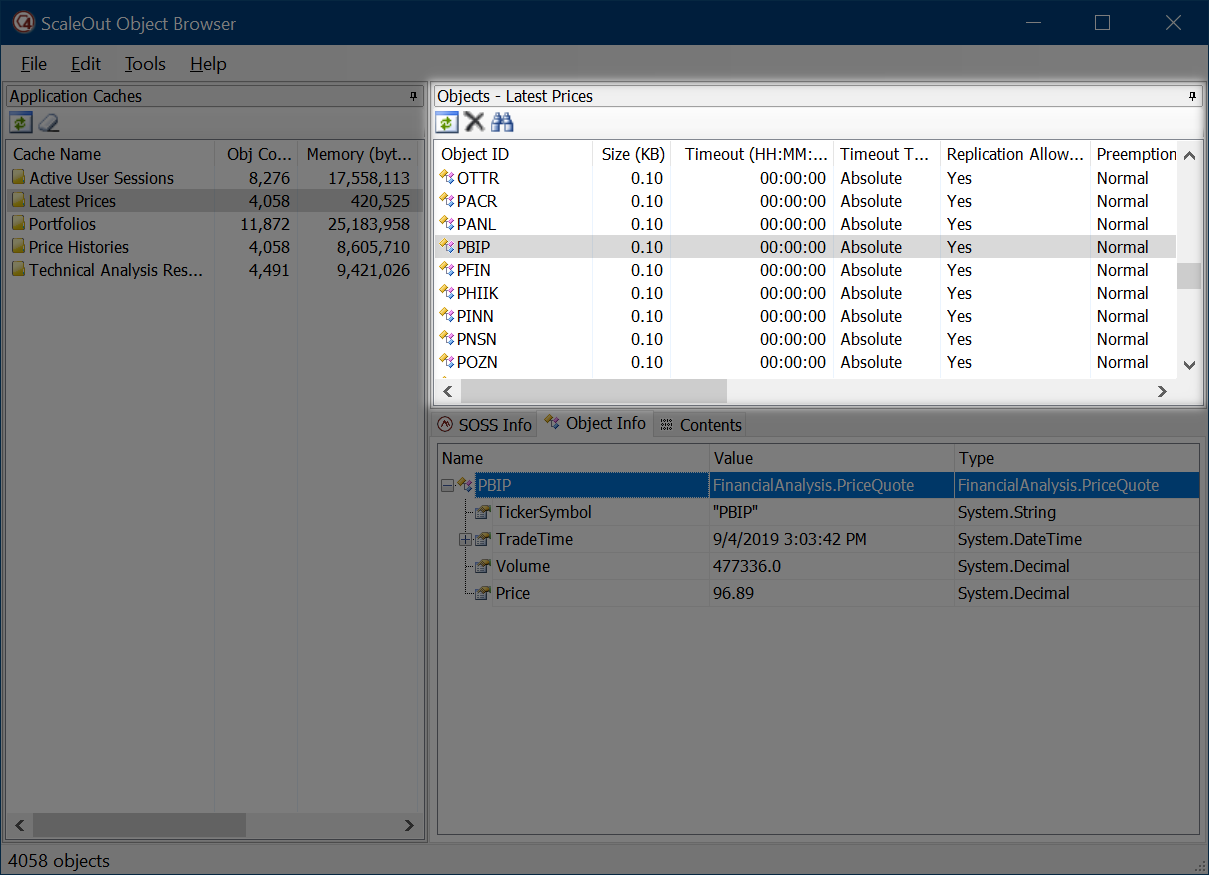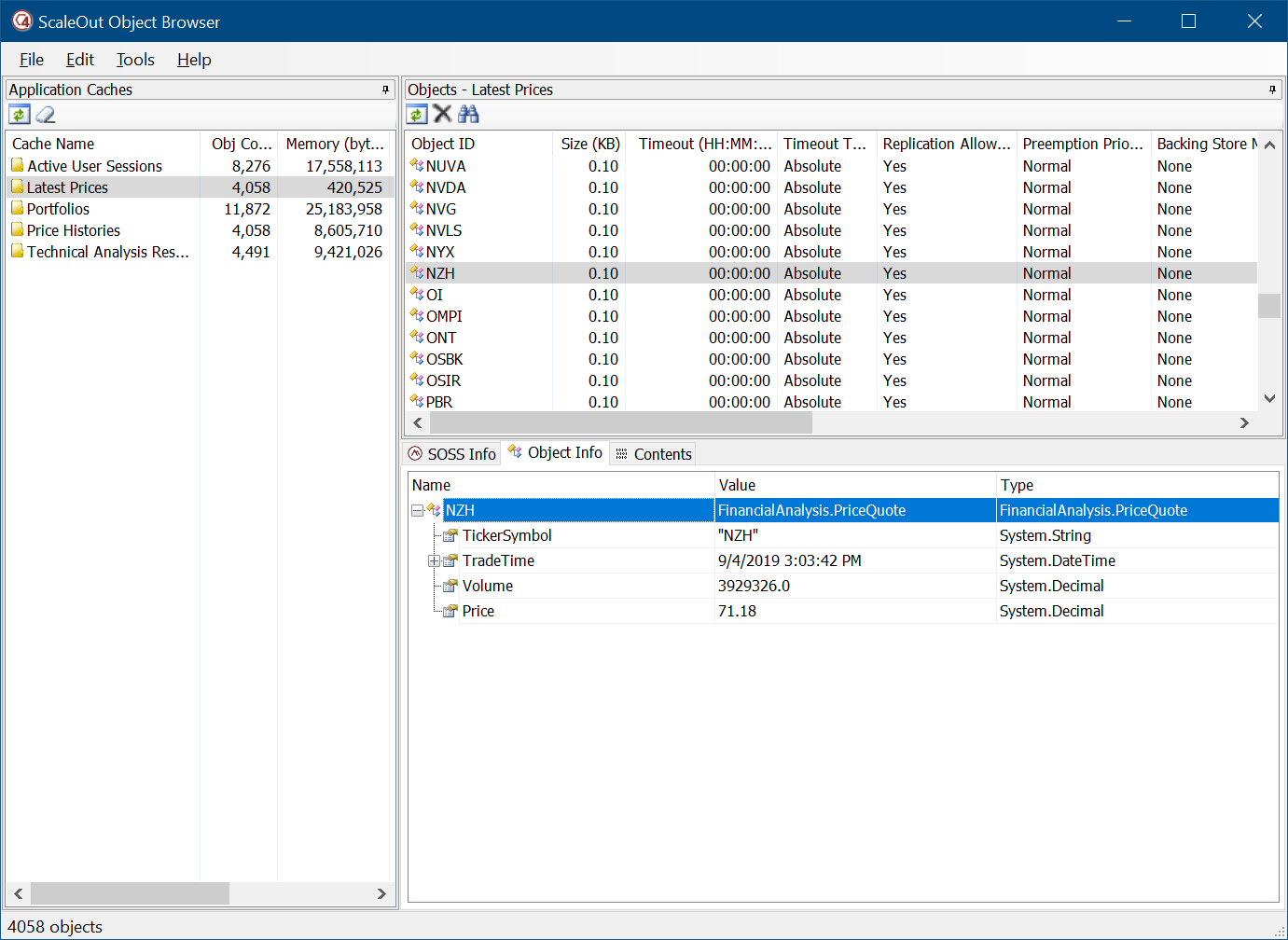Browsing Objects in the ScaleOut Service¶
Selecting an Application Cache¶
The SOSS Object Browser presents two dockable panes to aid in navigation of the data store. The Application Caches pane lists named caches present in the ScaleOut distributed data grid, with each cache represented by a folder icon. The cache marked “(default)” contains any objects that are assigned to the default, unnamed cache.

Note that an “application cache” in SOSS corresponds to any of the following:
- An ASP.NET web application that stores its session state in ScaleOut SessionServer.
- A named cache that was defined through the NamedCache API.
- A cache that was defined through the Scalout.Client API.
- An application name that was defined through the CachedDataAccessor API.
Viewing Objects in an Application Cache¶
Once an application cache has been selected, the Object List pane will be populated with a list of objects in that cache.

Objects in the list can be sorted by clicking on a column header. Sorting requires the retrieval of metadata for every object in the list, which may be a lengthy operation when working with caches that contain thousands or millions of objects. The Object Browser will warn the user about lengthy sort operations and will present a progress dialog that allows the sort to be cancelled.
The list of objects does not refresh in real time. Click the Refresh button at the top of the pane to re-retrieve the list of objects from the ScaleOut service.
Object names in the tree may not be human-readable strings. Application developers may choose to use types other than strings (for example, guids or byte arrays) as keys to objects that are cached in the ScaleOut service. In this case, the Object Browser will display a hexadecimal representation of the object key in the list of objects.
Viewing Object Details¶
When an item is selected in the Object List pane, the Object Browser will display a number of details about the selected object inside of a tab control:

More information about object details can be found in the topics covering the SOSS Info, Object Info, and Binary Contents tabs.